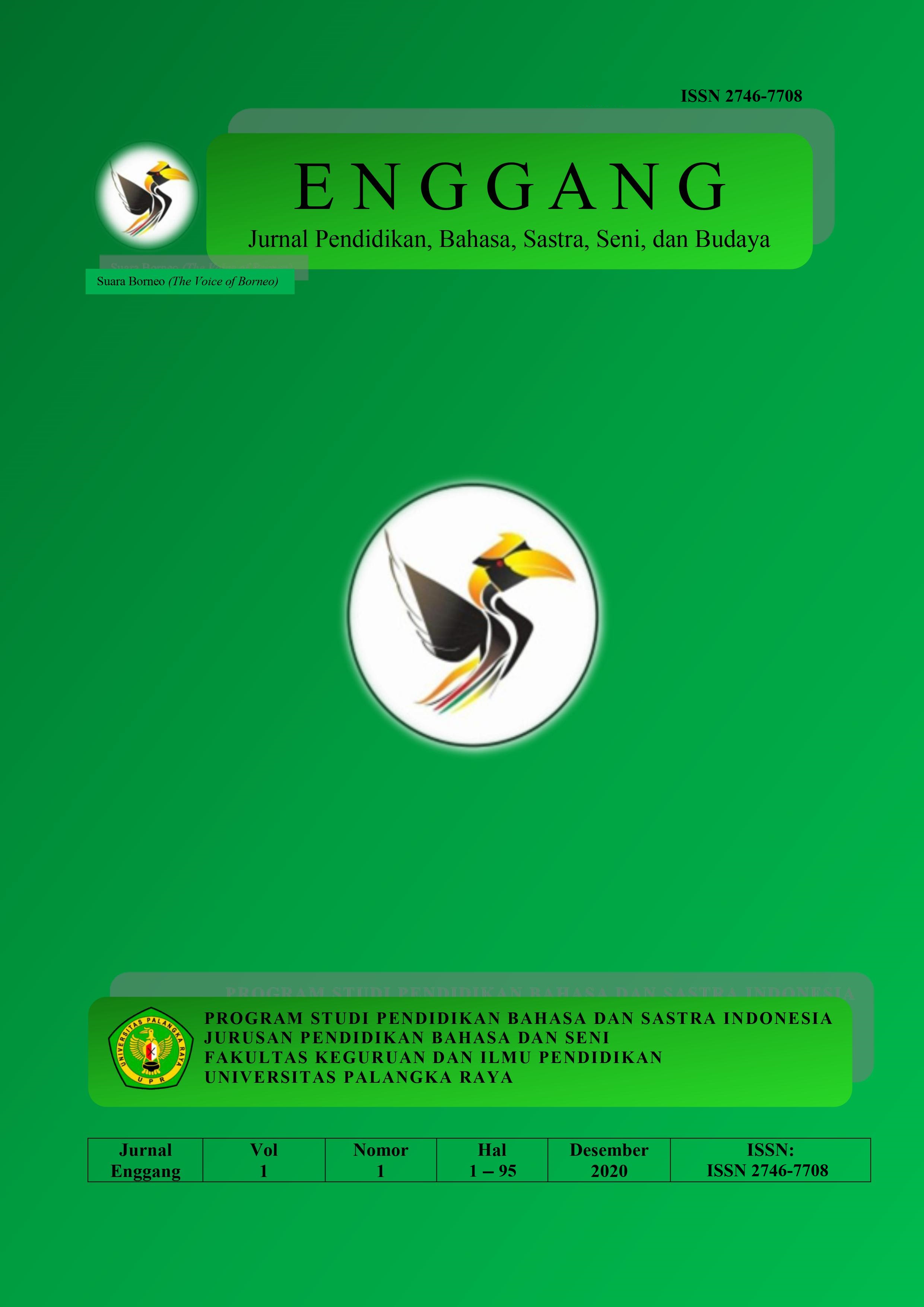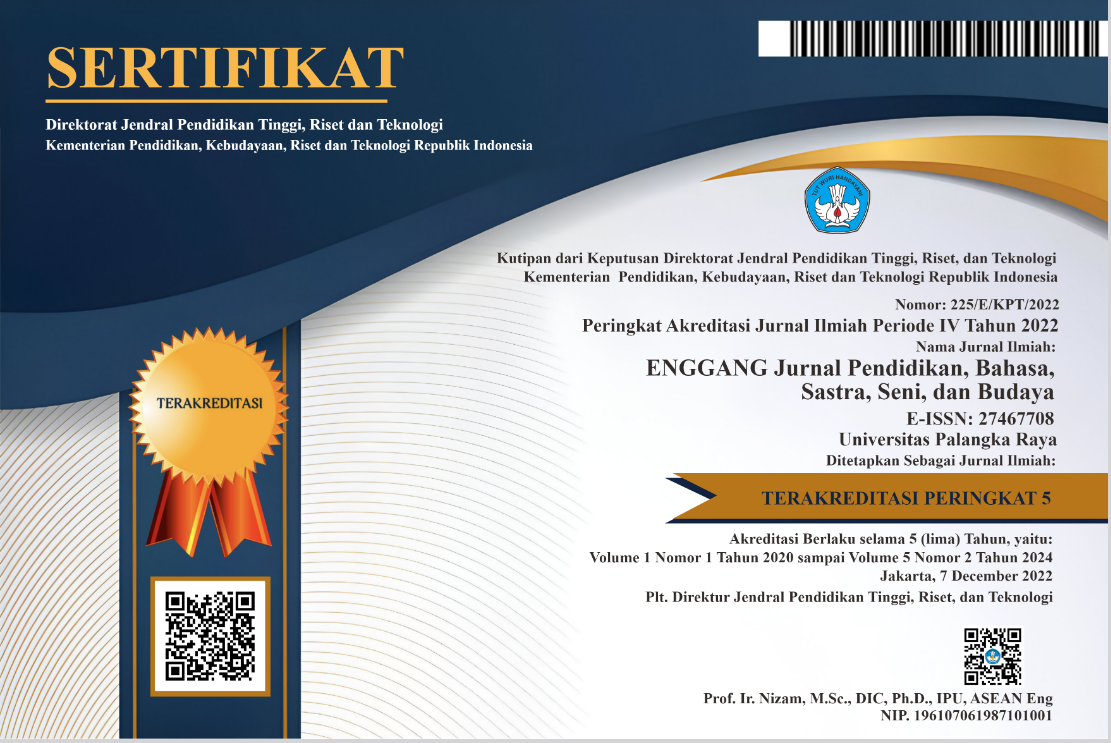Kedisiplinan Guru dalam Pembelajaran Sekolah Menengah Pertama di Pinggiran Kota Wamena, Kabupaten Jayawijaya
Studi Kasus SMP Negeri Walelagama
DOI:
https://doi.org/10.37304/enggang.v1i1.16749Keywords:
Teacher Discipline, Internal Factors, External FactorsAbstract
The research in this journal aims to identify various factors that influence the lack of teacher discipline at SMP Negeri Walelagama. Based on a qualitative approach with a case study strategy. The results show that there are two vital factors affecting teacher discipline: internal and external factors. Internal factors include a lack of awareness of professional responsibilities and low teacher motivation. External factors include limited infrastructure, such as inadequate teacher housing, unfavorable security conditions, and minimal access to health services. Lack of assertiveness in rule enforcement also contributes to low teacher discipline. These findings suggest that improving discipline requires a holistic approach, including the provision of basic facilities and training programs that can increase teacher motivation. Thus, improving teacher discipline can lead to a more optimal learning environment.
Downloads
References
Behrman, J. R. (1990). The action of human resources and poverty on one another: What we have yet to learn. Washington, DC: World Bank.
Bogdan, R. C., & Biklen, S. K. (1982). Qualitative research for education: An introduction to theory and methods. Boston, MA: Allyn and Bacon, Inc.
Cenderawasih, U., & Abepura-Sentani, J. R. (2024). Penyuluhan dan penerapan sekolah damai untuk menumbuhkan sikap positif peserta didik. Jurnal Abdi Pendidikan Program Kebinekaan Global, 5(1), 29–39.
Creswell, J. W. (2013). Qualitative inquiry & research design: Choosing among five approaches. Thousand Oaks, CA: SAGE Publications.
Dewantara, K. H. (2013). Pemikiran, konsep, dan praksis pendidikan Ki Hajar Dewantara. Yogyakarta: Taman Siswa.
Elvina, T. (2023). Analisis faktor penyebab rendahnya kedisiplinan siswa kelas 9 dalam pembelajaran tatap muka di SMP X di Surakarta. Jurnal Sosial Humaniora Dan Pendidikan, 2(1), 42-51.
Irianto, P. (2024). Student overview of the Pancasila and citizenship education study program: Understanding Pancasila, social participation, and perception as agents of change. Formosa Journal of Science and Technology, 3(2), 367–386. https://doi.org/10.55927/fjst.v3i2.8240
Jamal, O. (2020). The role of the Barisan Merah and Putih in fighting for legislative member for indigenous Papuans. ACEH 2019, 418, 214–221. https://doi.org/10.2991/assehr.k.200320.042
Kogoya, W., Jamal, O., Krobo, A., Benggan, W., Keguruan, F., & Universitas, P. (2024). Penguatan karakter gotong royong bagi anak usia dini di PAUD Pelita Perumnas II Waena, Jayapura. Jurnal Pendidikan, 8(2), 98–103.
Meteray, B. (2022a). Klaim Kerajaan Majapahit dan penyemaian nasionalisme Indonesia di Kaimana. Jurnal Ilmiah Hubungan Internasional, 1–15. https://doi.org/10.26593/jihi.v0i00.5969.1-15
Meteray, B. (2022b). Kontestasi nasionalisme Indonesia pada tiga daerah penyemaian di Papua. Jurnal Ilmiah Hubungan Internasional, 48(1), 47–62.
Pudjiastuti, S. R., Iriansyah, H. S., Idrus, A., Fatgehipon, A. H., & ... (2024). Bunga rampai budaya demokrasi dalam perspektif kearifan lokal (Issue June). https://repository.penerbitwidina.com/publications/568910/bunga-rampai-budaya-demokrasi-dalam-perspektif-kearifan-lokal
Wabiser, Y. D., & Irianto, P. (2024). Problematics of students’ discipline value in academic activities and non-academic. Formosa Journal of Science and Technology, 3(2), 355–366. https://doi.org/10.55927/fjst.v3i2.8241
Wabiser, Y. D., & Meteray, B. (2023). The growth of Indonesian nationalism among Papuans after integration in Merauke (1963-1969). Masyarakat Indonesia, 35(August 1945), 246–266.
Yayusman, M. S. (2019). Perkembangan studi diaspora. Masyarakat Indonesia, 45, 106–111.













